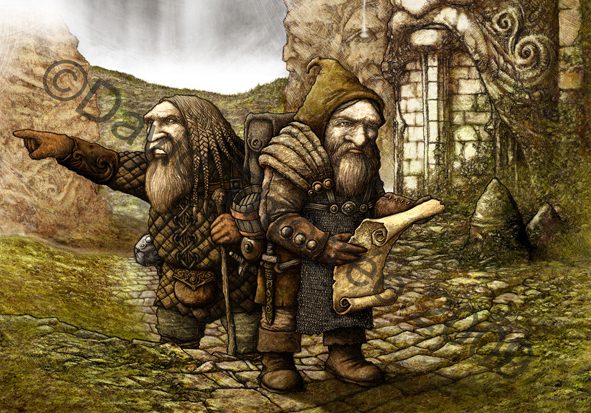In the imaginary world of literature, movies, and video games, there exists a plethora of captivating fantasy races, among which “Dwarves” stand out. In this article, titled “The Origins of Fantasy Races,” we will delve into the origins, characteristics, and development of different fantasy races. This time, we will focus on a particularly beloved race in various fantasy genres, such as The Lord of the Rings, The Hobbit, and World of Warcraft: the “Dwarf.”
Alongside “Elves,” “Dwarves” are another fantasy race that has garnered immense popularity among audiences in films and video games. Traditionally, these characters are depicted as residing in mountainous regions, skilled in metalworking, with an average height ranging from 1.3 to 1.5 meters, bushy beards, and a robust physique. However, the portrayal of Dwarves is not limited to these distinctive traits; throughout their existence, they have also undergone significant cultural evolution.
The concept of “Dwarves” has various origins, with most sources portraying them as not particularly attractive and often possessing negative attributes. In ancient Norse mythology, “Dwarves” have at least two distinct legends regarding their creation. One story suggests that “Dwarves” originated from the blood and bones of the primordial giant Ymir, who used his remains to create the Earth. In another account, “Dwarves” are said to have emerged from a creature created from Ymir’s flesh. Despite their dark appearance, their origins are frequently mentioned in Norse texts.
In Norse mythology, “Dwarves” are often depicted as skilled blacksmiths, but they are also characterized by negative traits such as greed and malice. These beings frequently engage in treacherous activities, such as murder, to extract blood from their victims to create the “Mead of Poetry,” a divine drink that imparts wisdom. This dark perspective of “Dwarves” can be contrasted with their portrayal alongside “Trolls,” where they are often depicted as antagonistic characters. In folklore, “Dwarves” also intermingle with “Dark Elves,” as seen in various studies on Norse mythology.
Even in ancient Anglo-Saxon traditions, “Dwarves” were often viewed as malevolent beings, leading people to avoid them due to their potential to cause harm, particularly in nightmares and fears. This could be seen as a reflection of the cultural stigma associated with the “Dwarf” identity. Additionally, folklorist Lotte Motz suggested that “Dwarves” have cultural origins tied to the European continent, as evidenced by the numerous architectural achievements attributed to them.
With such a rich historical background, how do we reconcile the image of the heroic “Dwarf” we see today? The answer lies in the transformative influence of J.R.R. Tolkien’s works, which reshaped the perception of this fantasy race.
To understand how Tolkien’s portrayal has influenced contemporary views of “Dwarves,” it’s essential to recognize that he crafted these characters inspired by real-life individuals, particularly during the time he was writing in the UK between the 1930s and 1950s. Interestingly, Tolkien’s “Dwarves” have often been analyzed through a critical lens, drawing parallels to Jewish people.
One can observe that various cultural representations of “Dwarves” focus on a homeland that is often depicted as distant and isolated, emphasizing their exceptional skills in craftsmanship and their somewhat greedy personalities. This connection is not only expressed through their role in various fantasy narratives but also through Tolkien’s own reflections where he noted, “I believe that ‘Dwarves’ resemble Jewish people, both in their closeness and their distance from the places they inhabit, speaking the languages of their homeland while retaining a unique culture.”
However, in order to completely redefine the meaning of this race, Tolkien had to navigate the complexities of cultural representation that Jewish people have historically faced in Europe. In “The Hobbit,” the arrival of the “Dwarves” brings joy, music, and camaraderie, which contrasts sharply with the darker, more sinister depictions of them in earlier folklore. In “The Lord of the Rings,” the relationship between Gimli and Legolas symbolizes the growing friendship between the Jewish people and the broader European society.
Throughout all of Tolkien’s works, “Dwarves” are consistently portrayed as noble characters, embodying the virtues of loyalty and bravery, even when faced with darkness and adversity. Their portrayal in Disney’s classic “Snow White and the Seven Dwarfs” from 1937 (which coincided with the release of Tolkien’s “The Hobbit”) further solidified their image in popular culture.
Source: Geek
Wasteland – A Unique Event That Fans of ‘Mad Max’ or ‘Fallout’ Would Want to Attend

























